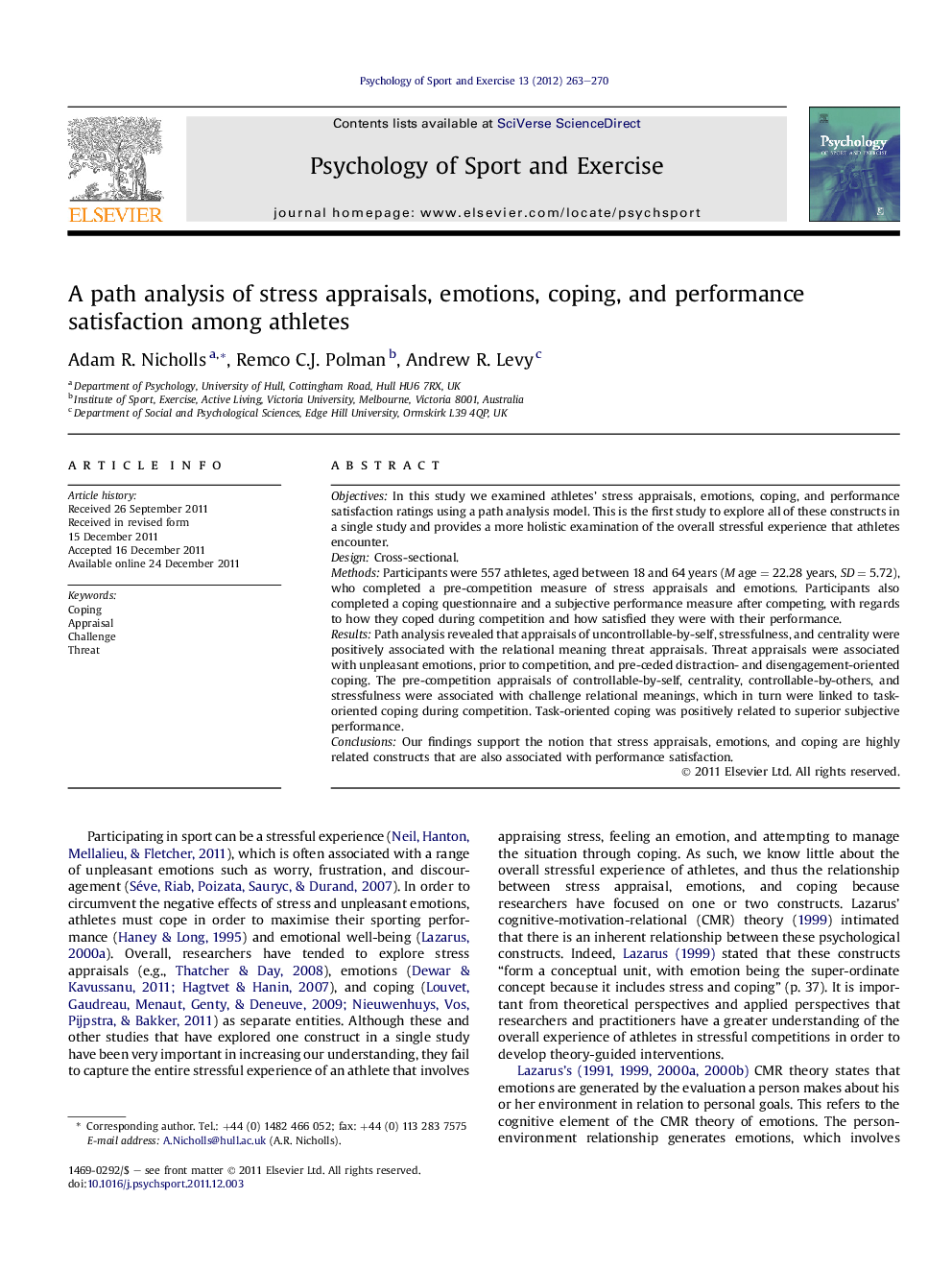| Article ID | Journal | Published Year | Pages | File Type |
|---|---|---|---|---|
| 894755 | Psychology of Sport and Exercise | 2012 | 8 Pages |
ObjectivesIn this study we examined athletes’ stress appraisals, emotions, coping, and performance satisfaction ratings using a path analysis model. This is the first study to explore all of these constructs in a single study and provides a more holistic examination of the overall stressful experience that athletes encounter.DesignCross-sectional.MethodsParticipants were 557 athletes, aged between 18 and 64 years (M age = 22.28 years, SD = 5.72), who completed a pre-competition measure of stress appraisals and emotions. Participants also completed a coping questionnaire and a subjective performance measure after competing, with regards to how they coped during competition and how satisfied they were with their performance.ResultsPath analysis revealed that appraisals of uncontrollable-by-self, stressfulness, and centrality were positively associated with the relational meaning threat appraisals. Threat appraisals were associated with unpleasant emotions, prior to competition, and pre-ceded distraction- and disengagement-oriented coping. The pre-competition appraisals of controllable-by-self, centrality, controllable-by-others, and stressfulness were associated with challenge relational meanings, which in turn were linked to task-oriented coping during competition. Task-oriented coping was positively related to superior subjective performance.ConclusionsOur findings support the notion that stress appraisals, emotions, and coping are highly related constructs that are also associated with performance satisfaction.
► Challenge was associated with control and threat no control. ► Threat was associated with negative emotions. ► Challenge was associated with positive emotions. ► Positive emotions were associated with higher subjective performance. ► Task-oriented coping was associated with higher subjective performance.
